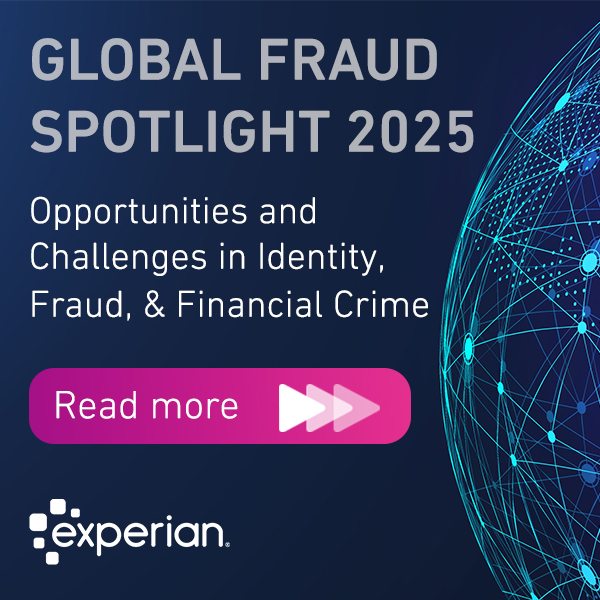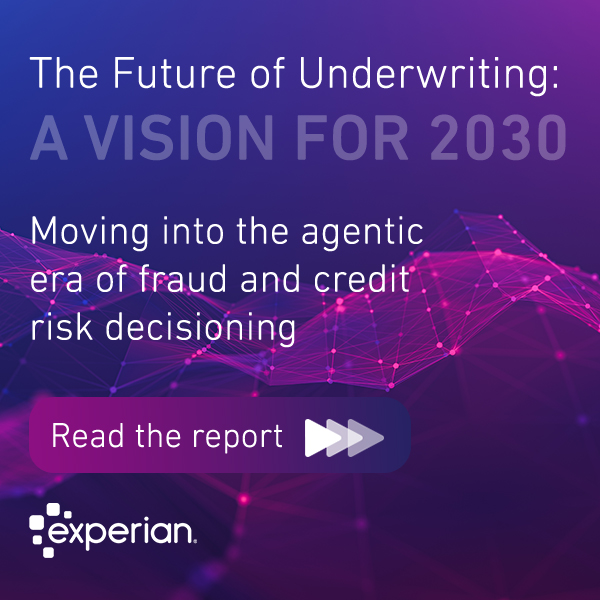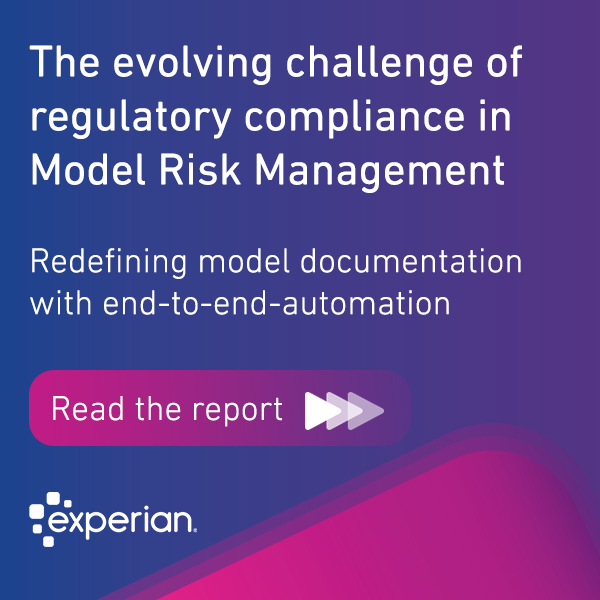Search Results for: ai

Latest Global Insights Report: How supporting consumers in a time of uncertainty can help businesses adapt and grow A changing economic landscape needs a new approach The new digital consumer is here to stay and they expect businesses to support them with the products and services they need to navigate the rising cost of living, in a secure digital world personalised to them. Find out how: Our latest research reveals how economic uncertainty is evolving the experiences and expectations of digital consumers. From increasing the demand for credit options and financial inclusion, to deepening the need for trust, security and being seen. Read the report to find out how businesses can benefit from responding to changing consumer needs - including the additional tools and resources consumers and businesses may need to maintain financial health: What do digital consumers want? The global economy is under pressure with inflation raising prices across the world. In response, consumer behaviour is shifting, as people tackle the increased cost of living, and the prospect of an economic downturn. Digital consumers are continuing to manage their lives online and are expecting businesses to take the lead on improving the digital environment. A quality online experience is paramount, or consumers will move on. 1 in 4 businesses lost more than 10% of their customers in 2021, due to “suboptimal” digital experiences. A range of payment options including BNPL As prices rise, consumers are expecting to spend more online and are looking for varied credit options to help manage their finances. The demand for buy-now-pay-later (BNPL) options is also growing, with more consumers using BNPL to buy household staples. Consumers look favourably on companies that offer BNPL, but companies will have to find the right balance between supporting customers and managing credit risk. 32% of BNPL purchases were for groceries, up from 27% in March. Financial inclusion Economic uncertainty is accelerating the need for greater financial inclusion. Businesses need to find more creditworthy consumers and support them with responsible and sustainable products and services. 1 in 3 businesses is in the process of rolling out financial inclusion initiatives Security and trust As consumer need increases, so does fraud, including cost of living scams. Security is now a top priority for consumers around the world, alongside privacy, convenience and personalisation. 50% of consumers say they’re concerned about their online transactions. However, trust in emerging customer recognition tools is increasing, with consumers’ top three including physical biometrics, PIN codes and behavioural biometrics. Personalisation Consumers who trust businesses are more willing to share their data, enabling companies to create more personalised experiences, which in turn, improves consumer trust. 46% of consumers say that personalisation (receiving offers that fit their needs) is the most important aspect of their online experience. Read our report to discover the challenges and opportunities facing consumers and businesses and the tools, resources and strategies that can help your company get ahead. The survey results represent 6,000 consumers and 2,000 businesses across 20 countries, including Australia, Brazil, Chile, China, Columbia, Denmark, Germany, India, Indonesia, Ireland, Italy, Malaysia, Netherlands, Norway, Peru, Singapore, South Africa, Spain, UK, and US. Read our report

Latest Global Insights Report: How supporting consumers in a time of uncertainty can help businesses adapt and grow A changing economic landscape needs a new approach The new digital consumer is here to stay and they expect businesses to support them with the products and services they need to navigate the rising cost of living, in a secure digital world personalised to them. Find out how: Our latest research reveals how economic uncertainty is evolving the experiences and expectations of digital consumers. From increasing the demand for credit options and financial inclusion, to deepening the need for trust, security and being seen. Read the report to find out how businesses can benefit from responding to changing consumer needs - including the additional tools and resources consumers and businesses may need to maintain financial health. What do digital consumers want? The global economy is under pressure with inflation raising prices across the world. In response, consumer behaviour is shifting, as people tackle the increased cost of living, and the prospect of an economic downturn. Digital consumers are continuing to manage their lives online and are expecting businesses to take the lead on improving the digital environment. A quality online experience is paramount, or consumers will move on. 1 in 4 businesses lost more than 10% of their customers in 2021, due to “suboptimal” digital experiences. A range of payment options including BNPL As prices rise, consumers are expecting to spend more online and are looking for varied credit options to help manage their finances. The demand for buy-now-pay-later (BNPL) options is also growing, with more consumers using BNPL to buy household staples. Consumers look favorably on companies that offer BNPL, but companies will have to find the right balance between supporting customers and managing credit risk. 32% of BNPL purchases were for groceries, up from 27% in March. Financial inclusion Economic uncertainty is accelerating the need for greater financial inclusion. Businesses need to find more creditworthy consumers and support them with responsible and sustainable products and services. 1 in 3 businesses is in the process of rolling out financial inclusion initiatives Security and trust As consumer need increases, so does fraud, including cost of living scams. Security is now a top priority for consumers around the world, alongside privacy, convenience and personalisation. 50% of consumers say they’re concerned about their online transactions. However, trust in emerging customer recognition tools is increasing, with consumers’ top three including physical biometrics, PIN codes and behavioural biometrics. Personalisation Consumers who trust businesses are more willing to share their data, enabling companies to create more personalised experiences, which in turn, improves consumer trust. 46% of consumers say that personalisation (receiving offers that fit their needs) is the most important aspect of their online experience. Read our report to discover the challenges and opportunities facing consumers and businesses and the tools, resources and strategies that can help your company get ahead. The survey results represent 6,000 consumers and 2,000 businesses across 20 countries, including Australia, Brazil, Chile, China, Columbia, Denmark, Germany, India, Indonesia, Ireland, Italy, Malaysia, Netherlands, Norway, Peru, Singapore, South Africa, Spain, UK, and US. Download Report

The survey underpinning these insights encompasses 1,849 business respondents and 6,062 consumers from 20 countries, including Australia, Brazil, China, Chile, Colombia, Denmark, Germany, India, Indonesia, Ireland, Italy, Malaysia, The Netherlands, Norway, Peru, Singapore, South Africa, Spain, UK, and US. We’ve also included interviews with consumers from Brazil, Germany, the UK, and US.

Our latest Global Identity and Fraud Report reveals that fraud has been of high concern for consumers over the past year. In fact, more than half of consumers report that they are worried about online transactions, and 40% say that their concern has increased over this period. Data breaches, well-publicised scams, and direct first-hand experience with fraud have all contributed to these higher levels of concern. Our study shows that 77% of consumers had increased concern after experiencing online fraud, with more than half of consumers surveyed having had a close encounter with fraud: 58% of consumers say they have been a victim of online fraud, know someone who has been a victim, or both 57% of consumers say they have been a victim of identity theft, know someone who has been a victim, or both 53% of consumers say they have been a victim of account takeover, know someone who has been a victim, or both As a consequence, it makes sense that consumers rank security and privacy above convenience and personalisation when evaluating their online experience and expect businesses to take the necessary security steps to protect them online. We look at the main factors that play a role in the high levels of fraud concern among consumers and what businesses should do to address challenges in their fraud strategies. Three contributing factors to increased fraud concern among consumers Identity fraud has increased Our research also unveils that identity theft has overtaken credit card theft as consumers’ biggest security worry across all age groups. Furthermore, a recent report from the UK showed that recorded cases of identity fraud have grown by 22% over the past year. Fraud prevention and security professionals have been trying to educate consumers for a long time on this topic. Stealing identity data and using it in multiple fraud schemes can be significantly more harmful than criminals having access to someone's credit card numbers, where transactions can be traced quickly and revoked or charged back. While many factors contributed to an increase in concern about identity theft, the most impactful over the past two years were the numerous cases of unemployment and benefits fraud. Multiple countries reported cases where criminals applied for loans in the name of genuine consumers or through synthetic identities, created by combining real stolen information with fake data. The cost of these scams is yet to be discovered, and it could take years to see their full effect, with fraud losses well into the billions (if not trillions) of dollars worldwide. Criminals can access stolen data and fraud tutorials beyond the dark web To commit many types of fraud, criminals need Personal Identifiable Information (PII) that is stolen through techniques such as hacking attacks, credential harvesting, credential stuffing, phishing, or other types of social engineering. For years the knowledge of how to do that, along with the stolen data available after a successful attack, was available mainly on cybercriminal forums accessed through the dark web. However, over the past year, it has become easier than ever to obtain not only PII data but also valuable information on how to bypass some of the security and fraud features in place for a certain institution. Criminals no longer need to go to the dark web to do that - it's available on platforms like Telegram, just a few clicks away, where other fraudsters are selling tutorials (often called 'Sauce') on how to commit fraud, as well as PII data (called 'Fullz') to achieve it. As a result, the entry level for those that want to commit fraud has been set lower than ever before - both in terms of skillset and accessibility. Phishing and scams are at all-time high Another contributing factor to the increase in consumer concern is the number of scams resulting in authorised push payment fraud, which totalled £583.2 million in the UK alone during 2021. Criminals continue to seek out consumer vulnerabilities and use a variety of tactics to apply pressure on their victims and convince them to transfer money out of their bank accounts. This could take many forms - from various types of impersonation scams, romance scams, and investment (fraud) opportunities, to scams related to utility bills and easy loan offers among other types. This wouldn't be possible without numerous phishing/smishing/vishing attempts and the amount of data available through data breaches. One other factor that helps criminals is the direct access to potential victims given by social media and the sheer volume of personal information available in the public domain. These types of scams sometimes get high publicity (and rightly so) which can also contribute to the increased level of concern among the public while also applying additional pressure on financial institutions to improve their fraud screening and transaction monitoring capabilities to protect consumers. How businesses can improve fraud screening capabilities and increase consumer trust To restore consumer trust, businesses need to look for ways to improve their capabilities both at account opening and login to prevent criminals from gaining easy access to their services. There are multiple ways to do that, from introducing online identity document verification or phone-centric identity verification capabilities at the account opening stage, to adding behavioural biometrics, device intelligence, or fraud data sharing capabilities during different stages of the customer journey. By introducing some of these capabilities businesses also can improve the digital customer journey for genuine consumers and increase trust. Online identity document verification and phone-centric identity verification solutions both offer pre-fill capabilities. These tools can streamline registration processes and thus contribute greatly to a positive consumer outlook of the company that offers them. While behavioural biometrics, device intelligence, and fraud data sharing tools are invisible to both fraudsters and genuine consumers creating a more frictionless experience. Businesses should look carefully at the fraud they are experiencing along with fraud trends shared by similar businesses. This should help inform whether to introduce new capabilities as part of the existing strategy. It's common that companies might need a mix of capabilities to mitigate fraud issues, with additional support from machine learning models to blend them into one cohesive output while limiting the number of false positives and building consumer trust. Stay in the know with our latest research and insights:

Did you miss these July business headlines? We’ve compiled the top global news stories that you need to stay in-the-know on the latest hot topics and insights from our experts. Digital experience is a key priority for the post-covid consumer TechWire Asia reports on data from Experian’s latest Global Insights Report to look at consumer expectations and the digital experience businesses can offer as consumers spend more time online. Experian CIO on digital identity, personalization and building trust with consumer data Kathleen Peters, NA Chief Innovation Officer, speaks with Finovate in this interview discussing the 2022 Global Identity & Fraud Report and thoughts on digital identity and how financial services companies can use consumer data to their advantage 91% of Indians prefer online payment methods Business Today India reports on findings from the Global Insights report, with digital payments having overtaken credit cards with 91 percent of Indians preferring online payment methods. Spain, the second country most concerned about online fraud CSO Computer World explores the findings from the 2022 Global Identity & Fraud Report from a Spanish consumer perspective, revealing that Spain is the second country most concerned about online fraud globally. Stay in the know with our latest research and insights:

It's hard to imagine an individual customer volunteering to remember multiple online passwords for various online accounts. Yet, for most of internet history, passwords have served as the backbone of online security and recognition—and given fraudsters easier access to our personal and financial data. Fortunately, our recent report reveals that consumers and businesses are evolving how they think about online recognition and authentication. Passwords are no longer consumers' preferred method of online security. For the second year, they didn't even make the top three list of what consumers consider the safest recognition methods. Instead, consumers are increasingly open to a variety of recognition tools, from physical and behavioral biometrics to one-time passcodes. By providing recognition choices, companies can improve the customer experience, decrease fraud, and ultimately build even more brand trust. Consumers are moving beyond passwords, but what should come next? Around the world, consumer fraud concern is rising in tandem with fraud activity. More than half of consumers report that they're worried about fraudulent online transactions, and 40% say that their concern has grown over the past year. That's likely because online fraud has become a far too common experience. For instance, 58% of consumers say that they've been a victim of fraud or know someone who has been a victim, and 83% of consumers say online security is their top priority. The awareness has made consumers more interested—and more confident in—emerging online recognition tools. It seems that many are not only tired of passwords but also understand how easily passwords can be compromised. Those surveyed ranked physical biometrics, pin codes delivered to a mobile device, and behavioral biometrics as the safest recognition methods. Notably, consumer confidence in each of the top three methods has increased significantly since 2021. This confidence in advanced recognition tools spans generations. For instance, 90% of Baby Boomers rank physical biometrics as the most secure, and 82% of Gen Xers and 75% of Gen Z say the same. Meanwhile, 81% of Millennials say behavioral biometrics are the most secure. These survey results suggest that most consumers are aware of fraud risk and willing to explore technologies that make their online transactions safer. Why recognition choice leads to better business outcomes Amidst this environment of change, financial service companies have the opportunity to introduce advanced recognition methods. Consumers are showing their willingness to move beyond passwords. But which recognition method should financial service companies choose? Which one will win out over the others? There's no one right answer. Consumers rank physical biometrics, pin codes, and behavioral biometrics as their top three preferences; however, there is no runaway leader in the group. Which method consumers prefer depends on what they're prioritizing. For instance, consumers who want convenience prefer physical biometrics, while people who value security tend to like two-factor authentication. The ambiguity around preferences allows businesses to introduce choice to their customers. Companies can offer visible methods that give customers access to the newer recognition tools they're beginning to prefer. Meanwhile, continuing to layer invisible methods that strengthen the overall security profile and enhance the customer experience. A menu of recognition options speaks to customer sentiments toward emerging technologies and may engender more trust and loyalty to a brand. For example, our 2022 research shows that 59% of consumers say that use of artificial intelligence increases their trust in a company. The key is being transparent about the choiceson offer and the role they play in protecting customer accounts and data. For example, explaining that the data underpinning specific authentication methods never leaves the device can go a long way with customers who may have misguided assumptions or reservations about specific recognition tools. The orchestration imperative Implementing choice can help customers improve the perception—and reality—of their online security. But leveraging multiple recognition options can also help organizations to better fight fraud. Multiple options enhance understanding of the customer and enables data analysis that can more easily identify outliers. The numerous data points strengthen recognition efforts, which further reinforces trust. It's a virtuous cycle that improves the customer experience and benefits the business. However, implementing multiple recognition methods can be a costly endeavor. Whether using outside vendors or developing and maintaining tools in-house, businesses should be layering recognition tools in the most efficient (and affordable) way. This is where orchestration tools really help. Creating secure environments for customers and businesses will continue to be complicated. Fraudsters are only getting more creative, and mitigating their impact requires a complex web of solutions that stymies them at various points. By starting with an orchestration engine, businesses can launch and manage multiple recognition methods more elegantly, using each tool correctly and at the right point in the customer journey. This strategic approach creates a single point of access to fraud and identity solutions, giving a 360-degree view of customer identity and reducing friction across the customer lifecycle. The days of passwords as the primary recognition tool are waning. Today's consumers understand the benefit of advanced recognition methods and will use them to increase their security, convenience and privacy. Offer customers choices, and businesses can meet these evolving expectations and decrease fraud risk along the way. Stay in the know with our latest research and insights:

Insights from the 2022 Global Identity & Fraud report Building digital consumer trust amidst rising fraud activity and concerns The survey underpinning the insights in our 2022 Global Identity & Fraud report encompasses 1,849 business respondents and 6,062 consumers from 20 countries, including Australia, Brazil, China, Chile, Colombia, Denmark, Germany, India, Indonesia, Ireland, Italy, Malaysia, The Netherlands, Norway, Peru, Singapore, South Africa, Spain, UK, and US. We’ve also included interviews with consumers from Brazil, Germany, the UK, and US. Insights from the video: The emergence of a digitally savvy consumer with a heightened awareness of fraud, and trusts brands to protect them online Consumers expect to increase their online activity in the next 3 months Consumers have higher expectations of the online experience Businesses are investing in multiple digital initiatives to meet consumer expectations, but the fraud risk persists More than half of consumers surveyed globally have been a victim of fraud or know someone who has 70% of businesses say their concern about fraud has increased since last year Only 30% of consumers are confident that businesses will recognise them repeatedly online, even though 84% of businesses say recognising customers is very or extremely important Consumers rank security as the top factor in their online experience and are actively seeking out businesses to provide it Read the report to discover 5 tips on how to increase the value of your customer's experience and reduce fraud risk Stay in the know with our latest research and insights:

Online fraud has increased at unprecedented levels over the past two and half years, with numerous reports coming from all corners of the world to confirm that. From benefits and unemployment fraud to authorised push payment fraud, and more advanced scams such as synthetic identity fraud and deepfake fraud, cybercrime has been on the rise. Understandably, the increase in criminal activity has had a significant impact on financial services businesses, and it is little wonder that this has been reflected in our recent study: • 48% of businesses reported that fraud is a high concern, and 90% reported fraud as a mid-to-high concern • 70% of businesses said their concern about fraud has increased since last year • 80% of businesses said that fraud is often or always discussed within their organisations High levels of fraud have also raised consumer concern, and their expectations of the protection businesses should offer them. Nearly three-quarters of consumers said that they expect businesses to take the necessary security steps to protect them online. However, only 23% of respondents were very confident that companies were taking steps to secure them online. Businesses need to take additional steps to meet consumer demand, while also protecting their reputation and revenue streams. Businesses are investing in fraud prevention, so why isn’t it working? As a result of the rise in fraud during the pandemic, there has been an increase in spending related to fraud prevention tools and technology, with 89% of businesses surveyed in our latest research indicating that investment in fraud detection software is important to them. However, there is a risk that institutions could take a siloed approach, and funds could be spent on point solutions that solve one or two problems without adding the needed flexibility to fight multiple attack patterns. This gives fraudsters the opportunity to exploit these gaps. Orchestration and automation drive fraudsters away Criminals constantly evolve. They are not new to technology and have multiple attack patterns that they can rely on. They also share information between themselves at a higher rate and pace when compared with financial institutions, banks, and merchants. Fraudsters can learn how to bypass one or two features in an organisation’s fraud prevention strategy if they recognise weak spots or a vulnerability that they can take advantage of. However, when multiple fraud prevention tools and capabilities work harmoniously against them, the chances are higher that they will eventually be blocked or forced to move to a weaker place where they can exploit another system. Synchronizing multiple solutions together is the key to excellent fraud orchestration Fraud orchestration platforms give businesses the chance to layer multiple solutions together. However, taking a layered approach is not only about piling multiple point solutions but also about synchronizing them to achieve the best output possible. Every solution looks at different signals and has its own way of scoring the events, which is why they need to be governed into a workflow to achieve the desired results. This means that institutions can control and optimize the order in which various solutions or capabilities are called, as the output of one solution could result in a different check for a subsequent one or even the need to trigger another solution altogether. It also gives companies the ability to preserve their user journeys while answering different risks presented to them. Some businesses are seeking to build trust with customers but want to stay invisible to remove friction from their digital customer experience. This is where capabilities such as device intelligence, behavioural biometrics, or fraud data sharing could be added as an additional layer in the fraud prevention strategy. Those additional solutions may only be called 30 per cent of the time when there is a real need for an additional check. Excellent orchestration means that organisations can rely on multiple solutions while only calling the services they need, exactly when they need them. Building trust through a secure but convenient customer experience. Machine Learning should be the final layer to rule them all The results from our research revealed the top initiatives that businesses are leveraging to improve the digital customer journey with the top two being: • Improving customer decisioning with AI • New AI models to improve decisioning While our April 2022 Global Insight Report showed that consumers are becoming more comfortable with AI, with 59% saying they trust organisations that use AI. Fraud orchestration platforms allow companies to deploy unified decisioning by leveraging machine learning (ML) on top of multiple fraud prevention tools. This means they can rely on one cohesive output instead of looking at separate, sometimes contradictory results across various platforms and making subjective decisions. ML can also offer explainability by pointing out the attributes that contributed the most to a particular suggestion or decision. These could be attributes coming from a few different tools instead of one. This also means that operational teams, like fraud investigators, have a single view of activity, resulting in operational efficiency - removing the need to log in to different tools and look at multiple screens, views, and scores, while also enabling faster decisions. Stay in the know with our latest research and insights:

Did you miss these June business headlines? We’ve compiled the top global news stories that you need to stay in-the-know on the latest hot topics and insights from our experts. Protecting customer accounts: The defining domain of digital CISOs CIO reports on data from Experian's latest Global ID & Fraud Report to look at why expanding challenges and responsibilities around customer and employee data protection and user experience means that the right authentication solution is critical. Experian says 25% of consumers were victims of online fraud in Asia Pacific Fintech News looks at Experian's latest Global ID & Fraud Report, citing that a quarter of consumers across Asia Pacific (APAC) have been victims of online fraud, but across all markets surveyed in the region, many remain unconcerned about fraud and identity theft amidst today’s growing fraud risk due to digitisation. Experian India launches PowerCurve Strategy Management, cloud-based decisioning solution The Business Information Industry Association reports that Experian India has launched a new PowerCurve Strategy Management solution, a powerful decisioning solution delivered as software-as-a-service via cloud. Digital wallets win over Brazilian consumers; Interview with Caio Rocha, gives Serasa expert opinion Serasa's Caio Rocha talks to Jovem Pan News in an exclusive interview discussing Experian's recent Global ID & Fraud Report, highlighting that 9 out of 10 Brazilians consider digital wallets safe. Stay in the know with our latest research and insights:

The survey underpinning these insights encompasses 1,849 business respondents and 6,062 consumers from 20 countries, including Australia, Brazil, China, Chile, Colombia, Denmark, Germany, India, Indonesia, Ireland, Italy, Malaysia, The Netherlands, Norway, Peru, Singapore, South Africa, Spain, UK, and US. We’ve also included interviews with consumers from Brazil, Germany, the UK, and US.

Building digital consumer trust amidst rising fraud activity and concerns Our latest report dives into the growing expectation that businesses recognise and protect consumers online, and the challenges businesses must overcome to succeed in building digital consumer trust. In recent years, our annual report has called on businesses to meet consumer expectations for online recognition and security while also improving their digital customer experience. Our latest research reveals that companies have received the message and are investing in multiple digital initiatives. But the fraud risk persists. 70% of businesses say that their concern about fraud has increased since last year. So where is the disconnect? A look inside this year's report: Digital financial transactions have become the norm in recent years leading to the emergence of a movement of savvy consumers with a heightened awareness of fraud and the role recognition and security tools play in protecting them online. We found that more than half of consumers surveyed globally have been a victim of fraud or know someone who has. Despite these concerns, most consumers say their online activity will increase in the next 3 months. What are consumers looking for from businesses? Consumers globally value security in their online experience above other factors. The research reveals how consumers are actively seeking out businesses that they perceive to be secure, and what this looks like to them. Read the report to find out: • How online security yields engagement and trust with today’s digital consumers • The role of businesses in protecting online consumers and the benefits of doing so • The current opportunity for businesses to implement multiple identity and fraud solutions • The role that orchestration and outsourcing play in helping companies prevent fraud We discovered there is still a significant gap between consumer sentiment and business intentions related to identity recognition. Only 30% of consumers are confident that businesses will recognize them repeatedly online, even though 84% of businesses say recognising customers is very or extremely important. What leads to success? Financial service organisations need to find ways to create more online security while improving the digital customer journey. Experian’s identity and fraud experts also offer 5 tips for strengthening digital capabilities to benefit the customer experience and reduce fraud risk. The survey underpinning these insights encompasses 1,849 business respondents and 6,062 consumers from 20 countries, including Australia, Brazil, China, Chile, Colombia, Denmark, Germany, India, Indonesia, Ireland, Italy, Malaysia, The Netherlands, Norway, Peru, Singapore, South Africa, Spain, UK, and US. We’ve also included interviews with consumers from Brazil, Germany, the UK, and US.

Experian’s latest research shows that the crisis of the past few years has yielded a new, savvier digital consumer. With the rapid move to online services amidst the pandemic, consumers worldwide adapted—and quickly. Fifty-three per cent of consumers say they have increased their online spending and transactions within the past three months, and 50% plan to increase it even more over the next few months. As online activity has surged, so too have consumer expectations for friction-free, secure transactions. More than 80% of consumers say a positive online experience makes them think more highly of the brand. And if businesses don't meet those expectations? Well, switching providers is only becoming easier . For financial service providers, the evolution of consumer behaviour presents both an opportunity and a challenge. It's never been more critical to ensure that digital experiences are convenient and frictionless. However, soon that will be the expectation and not the draw for new customers. Instead, finding unique ways to compete will be what separates the good from the great. Convenience versus risk In our latest survey, consumers ranked security, convenience, and ease of recognition as the top contributors to a positive online experience. All of these are vital components to providing a frictionless transaction. However, seamlessly logging in to a financial app, applying for credit, or managing a balance isn't yet the standard for every provider. Many traditional banks continue to play catch-up with digital upstarts, but consumers are becoming less tolerant of barriers to accessing services and products, with 23% saying that businesses aren’t meeting their expectations for digital experiences. This provides businesses with the opportunity to attract and retain new customers, especially those tired of manual account onboarding processes. For instance, leveraging emerging recognition tools adds to the convenience factor, limiting the time customers spend inputting data and streamlining the entire experience. But even as they continue to prioritise frictionless processes, businesses should be wary of sacrificing security or increasing their own risk. In our survey, 73% of consumers said that the onus is on businesses to protect them online. While they don't want security efforts that slow down their transactions, they expect the level of security to remain high nonetheless. On the business side, we've also seen providers creating friction-free options for lending—for example, in the Buy Now, Pay Later (BNPL) space—that enable consumers to access credit nearly immediately. But even with the convenience, there is still a need to manage affordability and ensure that these customers aren't introducing additional risk to credit models. Differentiate to retain customers: The growing role of rewards With all the innovation underway, a friction-free experience will become the standard. And it may already be so among digital-first businesses. This begs the question: If a secure, convenient experience is the norm for consumers, then how can businesses differentiate themselves? The next competitive differentiator will be how businesses reward customers for their loyalty. It's no longer enough to provide new customers with low-interest or no-interest credit on small purchases. Forward-looking financial services providers are getting far more creative with their rewards. For instance, businesses offering BNPL are enabling their customers to accumulate loyalty points for using the service with multiple retailers. Customers can then put those points to use as discounts on merchandise from the places they already love to shop. Data sharing and analytics play a significant role in this approach, allowing businesses to understand their customers' behaviours and personalise offers and rewards. Notably, our survey reveals that 83% of consumers say their awareness of how companies use their personal data for security, convenience, and personalisation has increased. Today's consumers are as digital as ever, and there's no going back. While friction-free may have been the differentiator before, it's rapidly becoming the standard. Going forward, financial services providers will need to find a new way to compete for savvy consumers who expect—and demand—secure, frictionless online experiences. Stay in the know with our latest research and insights:




